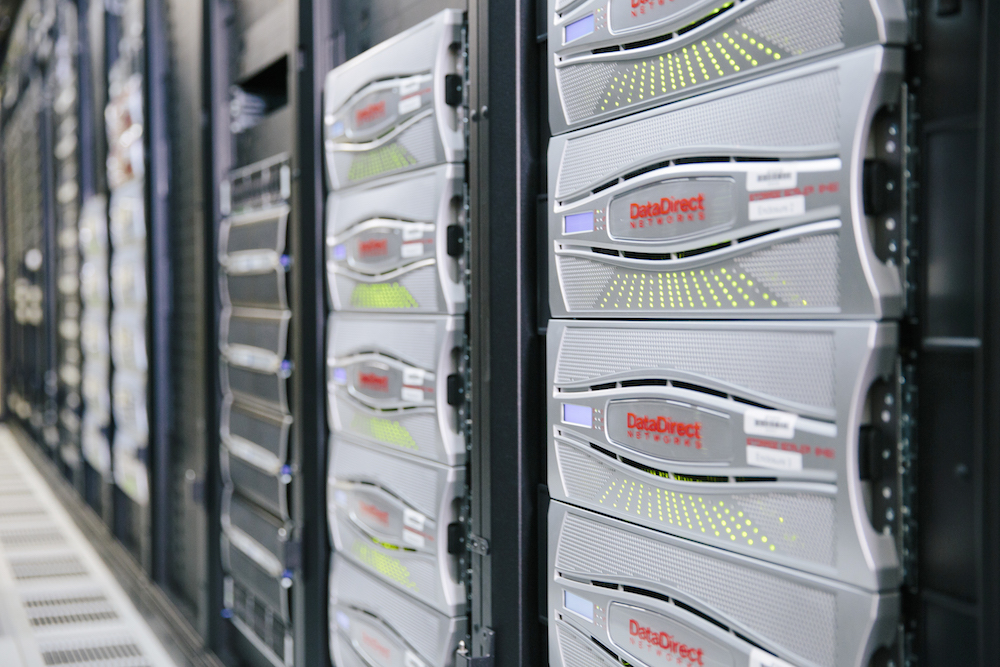
UQ’s new supercomputing scratch storage device — a major upgrade from the previous technology — is now in production.
The scratch storage device, where data is stored while users run high-performance computing jobs, will serve UQ supercomputers Awoonga, Tinaroo and FlashLite. It has also been carefully planned to complement UQ’s next supercomputer, due to be commissioned later this year.
RCC’s infrastructure team spent the last weekend of June at the Polaris Data Centre — where the scratch storage device was installed alongside UQ’s HPC hardware — preparing the new resource for production.
RCC Chief Technology Officer Jake Carroll said the new scratch storage is a very high-speed temporary location designed for intensive input and output operations associated with HPC workloads.
“The new storage is capable of about 100 gigabytes per second of throughput and many hundreds of thousands of input/output operations per second,” said Jake.
“The new device uses flash storage technology to dynamically move active workloads to the fastest part of the storage. It involves ultra-low latency flash memory and very high bandwidth.
“What this means in practicality is that jobs are waiting less time for their storage reads and write requests and spend more time using the power of the nodes for computation.”
The device replaces UQ’s ageing scratch storage and provides enhanced scalability and usability.
The installation of the new device required shutting down Awoonga, FlashLite and Tinaroo, with users given advanced notice about any outages, where possible. All three HPCs are up and running again, with FlashLite taking a week longer due to technical issues.
As HPC Wiener has its own scratch storage, it was unaffected by the shutdown.
If you have queries about any of the above, please contact the RCC Support Desk.



